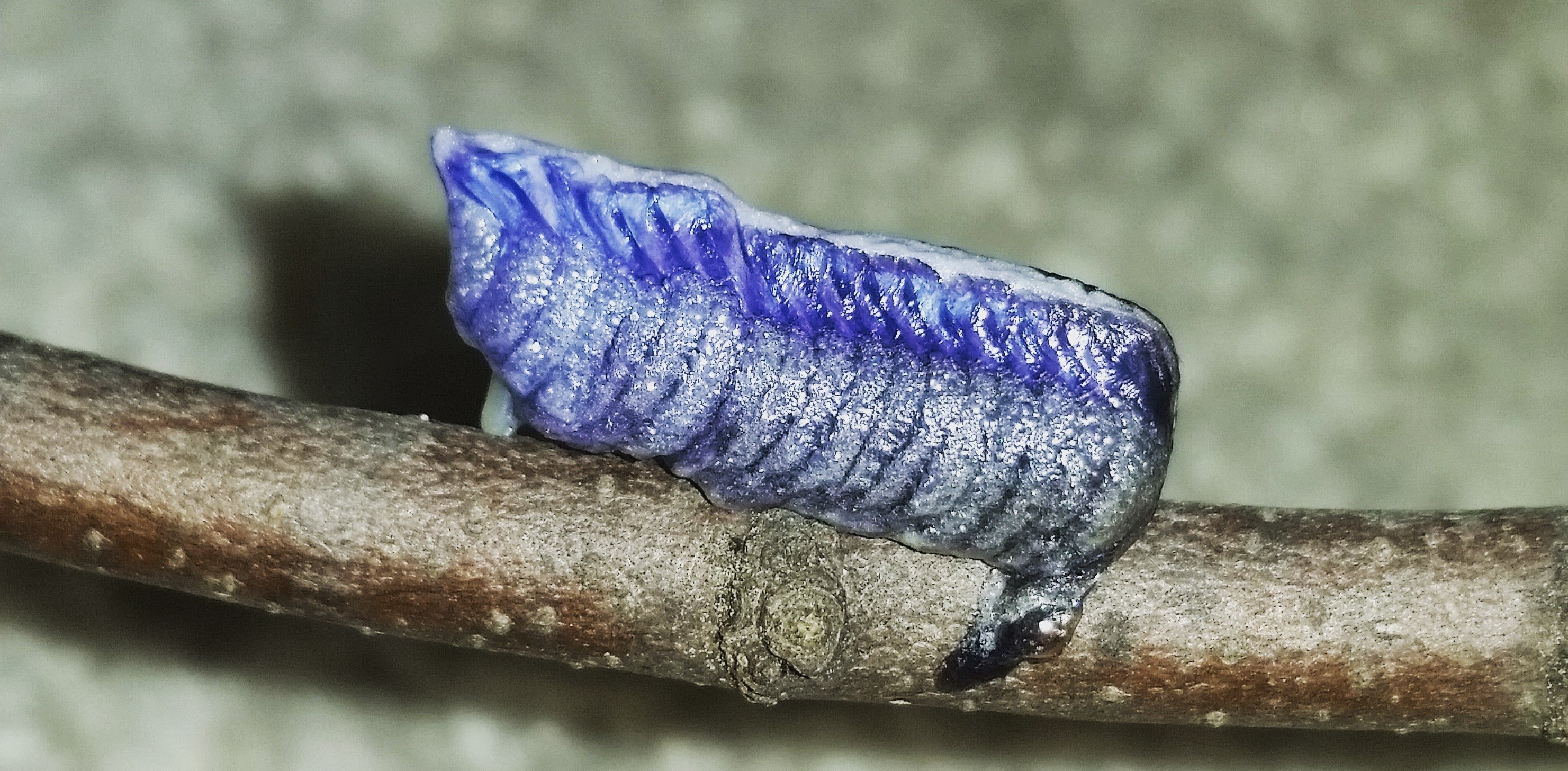Indian Grass Mantis Caresheet
Housing

The Indian Grass Mantis (Schizocephala bicornis) should be kept in an enclosure that is at least 3 times as tall as the mantis is long, and at least 2 times as wide as the mantis is long. Females are usually 6 to 6.5 inches long as adults, while males get around 5 to 5.5 inches long. The cage must also have adequate ventilation, and some kind of material on the ceiling of the enclosure which will allow the mantis to hang upside down during molting, as well as an empty space at the top which is at least 2 times the size of the mantis.
Although Indian Grass mantises are not Empusids, they still cannot climb smooth surfaces, and should be kept in mesh or screen cages with plenty of sticks on which to climb. They should be given a simple enclosure with silk plants (such as an Ivy Branch, Leafy Branch, Orchid Flower, or White Flower) and an easily disposable substrate such as sphagnum moss, or even just a paper towel that you can change once a week. You could even add a live, potted plant in the cage, but definitely skip the fully planted terrarium setup for these guys.
Temperature & Humidity
Indian Grass mantises do best in the 80°F -90°F temperature range, therefore, if you house is fairly cool, they may benefit from a heat lamp of some sort. A regular desk lamp with a 40 or 60 Watt incandescent light bulb should do the trick. Relative humidity (RH) should be at least 30%, but if you can get it up 50% or 60%, it will help with successful molting, especially as the mantises get larger and molting becomes more risky for them.
The enclosure should be misted at least once a day so they can drink. When kept in mesh or screen cages, we mist their enclosures twice a day. Most mantises do not like getting sprayed directly, so it is best to try and spray around the mantis, but if you get them a little wet by accident, it is usually no big deal. Use spring water, distilled water, or water filtered by reverse osmosis (RO), but do not use plain tap water.
Feeding
Indian Grass mantises should be fed flying prey throughout their entire lives as a staple diet. Due to their extremely small heads and raptors, the typical rule of “don’t feed the mantis anything much bigger than their heads” does not apply! Even though they are thin, they are still a large species. They may not eat as much quantity-wise as other mantis species, but they can start catching and eating house flies and blue bottle flies at the same age as any other species of mantis that has a similar body length.
- L1 – L2 nymphs: Should be fed D. melanogaster fruit flies.
- L3 and L4 nymphs: Should be fed D. hydei fruit flies.
- L5 nymphs: Should be fed house flies, or small blue bottle flies.
- L6 nymph to adult: Should be fed blue bottle flies, or small (.5 inches or smaller) cockroaches.
A good formula to follow when feeding these light eaters is as follows:
- L1 and L2 nymphs: Feed 4 to 8 fruit flies per nymph, twice a week.
- L3 and L4 nymphs: Feed 6 to 12 fruit flies per nymph, twice a week.
- L5, L6, and L7 nymphs: Feed the equivalent of 3 blue bottle flies per mantis, 2 times a week.
- Adult males: Feed the equivalent of 3 blue bottle flies per mantis, 2 times a week.
- Adult females: Feed the equivalent of 4 to 6 flies per mantis, 2 times a week.
However, if all the food is gone before the next scheduled feeding, you can always add more food. Indian Grass mantises are not prone to overeating. They will not eat just because the food is there; however, they WILL be stressed by too much excess food crawling around their enclosure.

